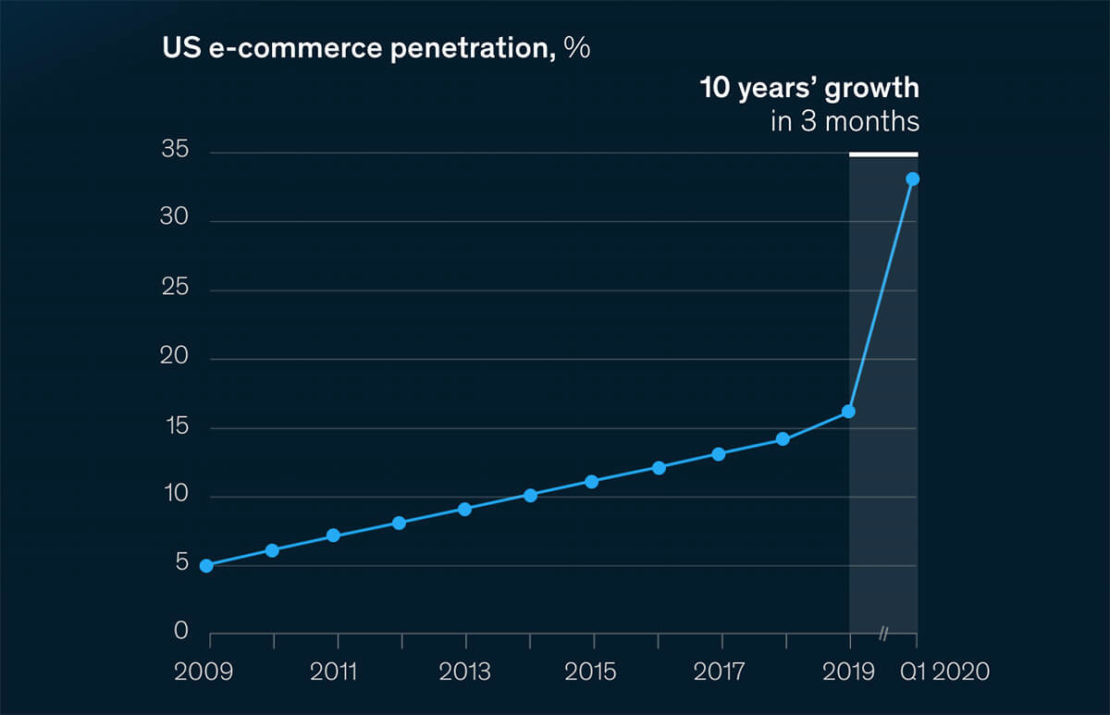BLOG
Managing eCommerce Projects In a Time of Crisis
Published: Aug 3, 2020
Ecommerce projects are hard work at the best of times. So, what should you do with them when hit by the unexpected?
It’s reported that 42% of companies don’t understand the need or importance of project management. Which doesn’t bode well when a crisis comes along.
The last few months have turned the eCommerce world upside-down. Amid the rollercoaster of crisis communications, demand, disruption to supply chain, and uncertainty about future recession, there are fires to fight everywhere. Those standard operating procedures you created may go out the window.
However, there’s a big question in the background: What happens to all our grand plans for innovation when a Black Swan event arrives?
¯\_(ツ)_/¯
Most of us had eCommerce projects in play when the coronavirus crisis arrived. These kinds of innovation projects can be big or small. It can be replatforming, switching or onboarding new technologies, or trying out new acquisition channels.
Now that the world has changed so quickly overnight, how do we decide what to do with them?
Ecommerce projects: The state of play
First of all, none of us are alone in pumping the brakes in light of upheaval. In a recent survey by Marketing Week and Econsultancy, 43% of marketers reported having delayed or are reviewing planned technology or infrastructure spending in light of the COVID-19 crisis.
This comes as part of a wider freezing of growth. The same survey reported that 55% have paused new product or service launches, and 60% have delayed budget commitments.
These numbers seem fairly substantial. However, they actually show that around half of marketers aren’t changing their plans for growth or innovation in light of the crisis. That’s a significant proportion of the competition that is still pressing ahead with business as usual (more or less).
So the question is: Which of these two opposing camps should you fall into?
Which camp are you in?
From what we’ve seen in the last few months at Yieldify, where we work with around 1,000 eCommerce websites worldwide, there’s a fairly clear set of two different factors determining whether or not companies are pausing innovation projects.
Prioritising short-term fires
First up is fire-fighting. Many eCommerce companies – whether they’re seeing a huge spike in demand (like our clients at Domino’s Pizza) or seeing traffic drop – are dealing with immediate disruption to their businesses that has to be prioritized.
For example, many have seen their supply chains impacted by lockdown in China. Others have had difficulty in fulfilling orders as lockdowns increase in their home markets. Both of these have been accompanied by the challenges of remote working and a diminished workforce as a result of illness and self-isolation.
If you’re experiencing crisis management challenges such as these, it makes perfect sense to press pause on innovative eCommerce projects to redeploy your resource where it’s most needed. However, it’s vital as a leader that you raise your head up from the current fires to see what’s next on the horizon and be ready for it.
This crisis – like any other – will be over at some point, and business will return to normal.
Long-term innovation vs. economic fallout
The second motivation we’ve seen for halting activity on eCommerce projects has been longer-term concerns about business success and viability in anticipation of the economic impact of COVID-19.
This is where things get a little bit more complicated. Exercising caution in the face of potential rough times is, of course, a smart thing to do. But to stop completely is potentially to throw the baby out with the bathwater.
Here’s why.
One of the hottest takes in our space right now is that the coronavirus crisis isn’t necessarily disrupting the eCommerce industry. It is simply accelerating change that was already in play.

Put simply, it’s saying that the ones to survive this turbulent time will be the ones who had already done the work of transitioning successfully to a digital model. And the ones who don’t survive were already in trouble (or at least heading towards it).
You can agree or disagree with this. For us, we think it’s a little too early to commit fully to an idea like that. However, there’s an important lesson in it for anyone who’s freezing their eCommerce projects in the face of a crisis: It’s very likely going to impede your recovery.
You can look at it this way: If you’re lucky enough to be in a part of our industry where consumer behavior is generally playing in your favor as a result of COVID-19 (let’s say, online groceries), you’ll still need to emerge from this time with an ability to turn your newly-acquired customers into actual lifetime value. That work starts now.
Alternatively, you might be in a vertical where there’s real nervousness about what a recession might do to your business. Luxury goods, for example.
You’re about to head into a time where there’s a smaller market to share, so your competitive edge needs to be ten times sharper. With less traffic coming in, your conversion rate has to get higher. You’re going to need to take your website’s experience to the next level to win. Again – that work starts now.
How to keep moving forward
If you had some grand plans in February that suddenly came grinding to a halt in March, where do you go from here?
To help you determine how you should move ahead, we recommend asking yourself the following three questions about the eCommerce projects you’ve pressed pause on:
1. What positive impact does it stand to make?
This is the first question to ask as part of a pretty simple cost-benefit analysis. In the world that we’re about to enter, you’ll need to make sure that you’re getting measurable results from your eCommerce projects in order to justify the resource and the budget.
Focus in particular on those actions that will improve your website experience. Traffic is already volatile and there’s a limited level of control you have over this. Turn your attention to making sure that the traffic you’re getting converts at a higher rate.
2. What disruption and risk do your eCommerce projects entail?
If we’ve determined the benefit, then look at the cost. How much does your project necessitate putting your existing business at risk?
For example, replatforming usually involves teething troubles and bug fixes (39% see a drop in conversions immediately after launch). In the case of Marks and Spencer, it even involved getting existing customers to reactivate accounts – a huge risk!

At times like this, you may want to delay sweeping changes in technology. But remember, that doesn’t mean ruling out changes altogether. For example, most chatbots and onsite messaging tools integrate with just a couple of lines of code and can be easily removed if you need to – and can make a real impact on your bottom line right now.
3. Can you be iterative?
Aside from looking at the cost-benefit analysis that you first put together, take the time to break your eCommerce project down with fresh eyes. If something seems too labor-intensive or high-risk at this point, see whether you might be able to break down your project into smaller, more manageable stages.
Being agile and iterative at this point will help you immensely (a principle that applies to how you do business as a whole – not just how you manage innovation).
Closing thoughts
Perhaps you’ve re-evaluated your eCommerce projects and determined that even in their most agile form, the fires you’re fighting still need to come first. That’s perfectly OK.
But let’s return to the point we made earlier about keeping your eyes on the prize, even when things are crazy.
If you’ve decided that your project is on ice for this week, ask yourself again next week. Don’t park this conversation for a months’ time. In the world we’re in now, a month is a lifetime. Check-in with yourself every week and repeat the exercise to make sure you’re on the front foot.
In the meantime, we recommend signing up for E-commerce Leadership Series: our new series for founders, VPs, CEOs, and other eCommerce leaders. You will get access to valuable e-commerce leadership content, exclusive dinners, and event invitations.